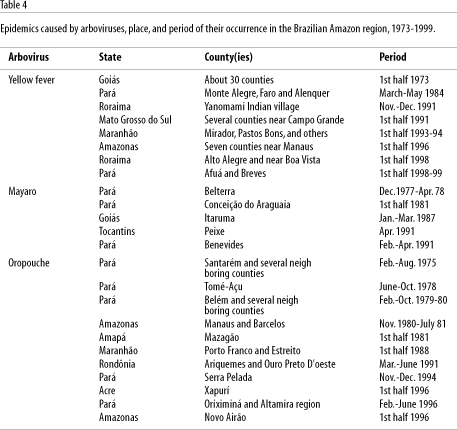A total of 187 different species of arboviruses and other viruses in vertebrates were identified at the Evandro Chagas Institute (IEC) from 1954 to 1998, among more than 10,000 arbovirus strains isolated from humans, hematophagous insects, and wild and sentinel vertebrates. Despite intensive studies in the Brazilian Amazon region, especially in Pará State, very little is known about most of these viruses, except for information on date, time, source, and method of isolation, as well as their capacity to infect laboratory animals. This paper reviews ecological and epidemiological data and analyzes the impact of vector and host population changes on various viruses as a result of profound changes in the natural environment. Deforestation, mining, dam and highway construction, human colonization, and urbanization were the main manmade environmental changes associated with the emergence and/or reemergence of relevant arboviruses, including some known pathogens for humans.
Arboviruses; Amazonian Ecosystem; Vectors' Ecology; Urbanization; Public Health




